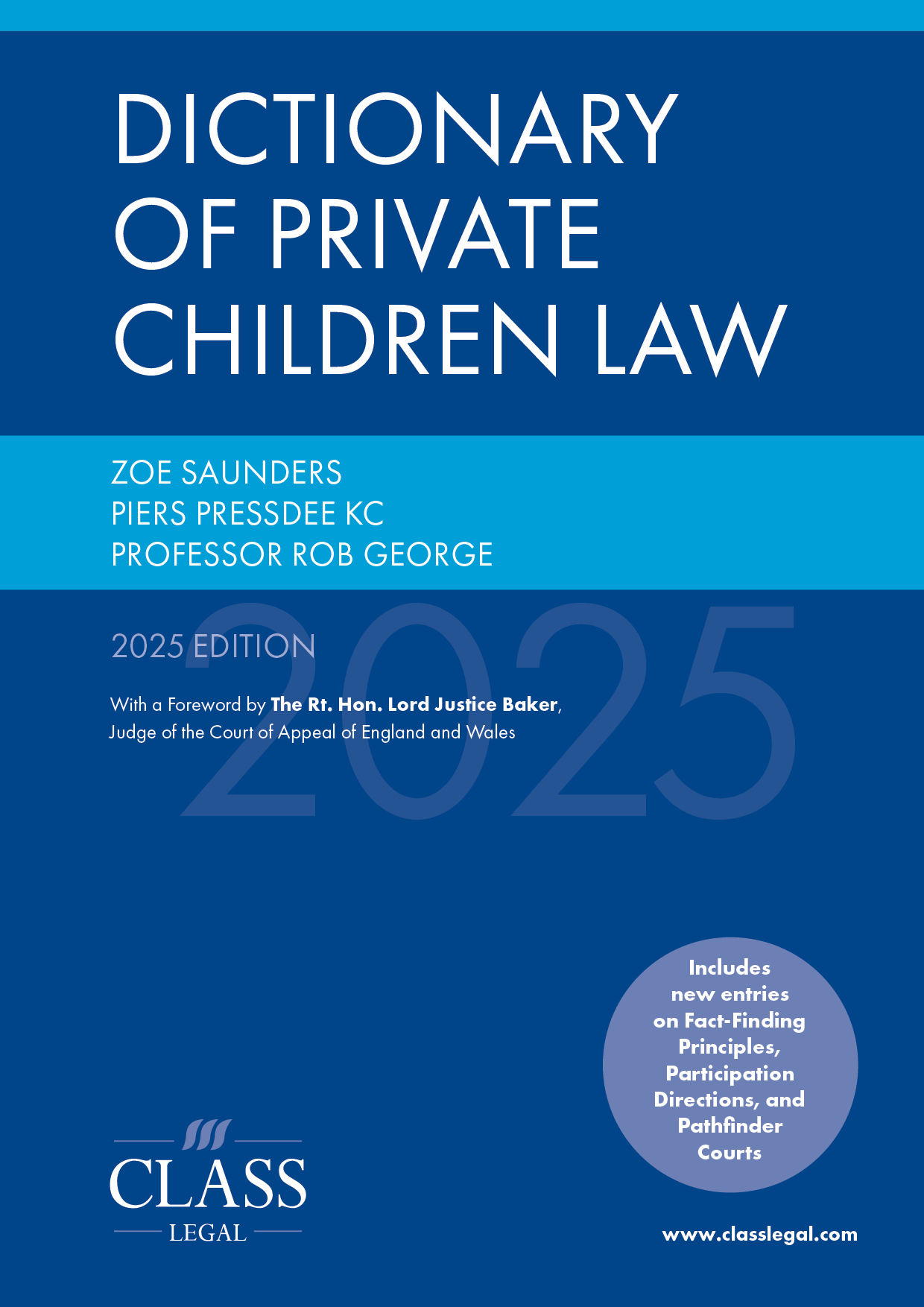
Cohabitation Reform Under the New Labour Government: Moving From a ‘Whether’ to a ‘What’?
Published: 20/08/2024 08:00

The law around cohabitation has been ripe for reform for many years. As far back as 2007, the Law Commission of England and Wales recommended that it be updated, so as to safeguard couples against uncertainty and injustice in the event of relationship breakdown. Similarly, academics and practitioners have long called for increased legal protections for cohabitants – see here and here. Yet, until recently, there has appeared to be little political impetus for change, as evidenced by the previous government’s rejection of the Women and Equalities Committee’s recommendations in their Rights of Cohabiting Partners inquiry – discussed here. Fortunately, in light of the newly elected Labour government’s manifesto commitment to ‘strengthen the rights and protections available to women in co-habiting couples’, the discourse around law reform in this area appears finally to have shifted.
On 28 June 2024, Jo Edwards and her team at Forsters LLP hosted an event exploring that shift and the future of cohabitation reform in this new political climate. Organised jointly with the Family Law Reform Now network, this event departed from asking whether the law should be changed to instead what that change should look like. Central to this debate is whether cohabitants should be given the same rights upon separation as married couples (or civil partners) on divorce, or alternatively less extensive rights. This issue has been explored in this journal before – see here – and this event sought to continue the conversation by looking at the experience of cohabitation reform in other jurisdictions. Reflecting the different reform models, speakers presented on the law in Australia, Scotland and Ireland. They provided inspiration for England and Wales while also highlighting possible pitfalls for us to avoid.
Professor Lisa Young of Murdoch University spoke about the law in Australia, which has equalised the legal treatment of spouses and cohabitants (or ‘de factos’) since 2009. She explained that this approach was introduced with minimal controversy, and that there have been no major criticisms since its introduction or calls for reform. Indeed, Young noted that such reform may well have been felt necessary in the context of cohabitation being common in Australia, largely driven by a shortage of affordable housing. That said, there are still outstanding matters for consideration.
In Australia, if a couple have been in a ‘de facto’ relationship and meet certain qualifying criteria, the law that determines property (and maintenance) on relationship breakdown is identical to that for married couples. Key to the qualifying criteria are, for instance, a time duration requirement, or whether the couple have had a child together. Regrettably, however, there has been some confusion as to when people are considered to be in a ‘de facto’ relationship. Moreover, given that Australia is a federation, the law determining whether you are treated as being in such a relationship can depend on which jurisdiction you are in. Whilst, from a Commonwealth perspective, ‘de facto’ relationships are construed as entailing living together on a genuine domestic basis, Western Australia views them as involving having lived together in a marriage-like relationship. There has been inconsistency about the extent to which it is perceived that marriage should be used as a reference point, as well as the relevance of the parties’ intentions. Young highlighted, ultimately, that there is at present a lack of data around how far the general population understand the relevant legislative provisions and the implications for their relationship. Even so, and whilst public education is imperative, Young felt that many (or possibly even most) ‘de facto’ couples do not dispute the existence of their ‘de facto’ relationship. Moreover, acceptance of a degree of uncertainty was considered by Young to be the price for important remedial legislation.
Kenneth Norrie, Emeritus Professor of the University of Strathclyde, reflected on the Scottish position. Whilst cohabiting partners within that jurisdiction do not have the same rights as spouses in the event of relationship breakdown, they can apply to the court for financial provision under the Family Law (Scotland) Act 2006. There is no minimum duration for the relationship to be considered a ‘cohabitant’, although the court will take into account its length, its nature, and the financial arrangements that were in place (s 25 of the Act). Moreover, the couple must have been living together ‘as if they were married’ – so, an analogy is again made with marriage. That said, interestingly, in K v Secretary of State for Work and Pensions [2017] SC 176, a lack of sexual relations between a woman and her gay flatmate was found not to preclude a finding of ‘cohabitation’.
Under s 28 of the Act, a cohabitant must show that they have suffered an economic disadvantage and/or that their ex-partner has experienced economic advantage. Unlike with married couples or civil partners (where there are strictly controlled provisions in the event of divorce or dissolution), the court has wide discretion in deciding claims. Indeed, the purpose of any such award is not specified in the Act, meaning that there is no indication as to what judges should be aiming for in their decisions. The deficiencies of the Scottish regime were highlighted in Gow v Grant [2012] UKSC 29. In the Supreme Court, whilst Lord Hope felt that the issue was fundamentally one of ‘fairness’, Lady Hale asked the more important question of how that ‘fairness’ was to be determined. This, she found, was ascertained by looking both at the parties’ situation at the beginning of the relationship, and at the end. The result has been that separating cohabitants in Scotland will receive less than divorcing couples, but not substantially so. Strikingly, Lady Hale ended her judgment by acknowledging that the 2006 Act had brought significant advantages to Scottish cohabitants, and that ‘English and Welsh cohabitants and their children deserve no less’. The law has recently been reviewed by the Scottish Law Commission, which has recommended the introduction of principles to guide discretion, removing the marriage comparator in the definition of ‘cohabitant’ in s 25, and increasing in the range of remedies available. We are currently awaiting the response of the Scottish Government.
Kathryn O’Sullivan of the University of Limerick explored the Irish position contained in the Civil Partnership and Certain Rights and Obligations of Cohabitants Act 2010. This operates as a ‘safety net’, applying automatically for qualifying cohabitants unless contracted out of. To seek relief under this Act, a number of hurdles need to be overcome. Initially, one must satisfy the definition of ‘cohabitant’ (under s 172(1) of the Act), which requires that the couple must ‘live together as a couple in an intimate and committed relationship’. A statutory list of factors will be considered that include relationship duration, basis for living together, presence of children, and financial arrangements, and it is further implied that the relationship must have been sexual at one time. Next, there is a need to fulfil the definition of a ‘qualified cohabitant’ (under s 172(5)). A couple must have lived together for two or more years where there are children, or five or more years where there are not. Finally, there must be financial dependence that has arisen from the relationship (or the ending of it). Once all of these steps have been met, a court may make an order where it is satisfied that it would be just and equitable to do so. O’Sullivan explained that there had been minimal litigation under the scheme, with very few reported judgments to date. This lack of precedent, in itself, hinders parties’ ability to settle their matters and bargain in the shadow of the law. Moreover, O’Sullivan remarked that, given the deficiencies of the bespoke scheme for cohabitants, there was a renewed reliance on trusts principles. Further insights were provided on how the Irish scheme is particularly weak in protecting the children of cohabitants, with the 2010 Act not allowing express financial provision for them.
The event was rounded up by closing words from Professor Jens Scherpe of Aalborg University and Graeme Fraser, Chair of Resolution’s Cohabitation Committee. Drawing upon their wealth of expertise in comparative family law, Scherpe remarked that cohabitation reform was essential and something that we owe as a society to future generations. He identified three reform strategies. The first was reform centred on specific property like the family home, as evidenced by the law in Sweden. This approach was not appropriate, as it did not reflect the lived reality of couples in England and Wales, especially in the absence of a developed welfare state. The second approach was ‘compensatory’, like Scotland, which provides inferior protections to cohabitants and prevents the courts from sharing the fruits of the relationship. The third and final approach was ‘participatory’, where couples are treated as spouses, but remedies are discretionary, with courts being able to take into account the fact that couples did not make the commitment of marriage. Ultimately, the choice of reform model is a policy decision but, crucially, Scherpe noted that the experience of Ireland reveals that, for any regime to be successful, it must be understandable and accessible.
Closing the event, Fraser set out Resolution’s position and outlined his longstanding involvement in their campaign to change the law. He noted that, while some members of Resolution’s Cohabitation Committee have begun to be persuaded that cohabiting couples should have the same rights as those that are married, only a minority were in favour. Even so, he highlighted how arguments favouring assimilation are gaining traction, and how, at Resolution’s National Conference in May 2024, delegates at a workshop on cohabitation reform voted 51:49 in favour of treating qualifying couples as spouses over treating them differently. Irrespective of the model chosen, Fraser reiterated how Resolution will continue to push for a change in the law that promotes fairness, equality and protection for those left most vulnerable upon relationship breakdown.
As the dust begins to settle after the general election, our new Labour Government is confronted with an exciting opportunity to finally reform this highly problematic area of family law. However, this event allowed us to focus on important questions surrounding the efficacy of future reforms and how they might operate in practice. Considerable care must be taken to ensure that the reform model chosen is right for England and Wales. It must be framed effectively, easy to understand for the public, and a regime that offers meaningful legal protection to qualifying couples currently left vulnerable by the law.












